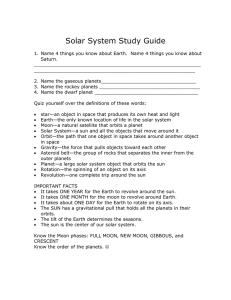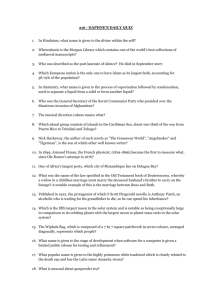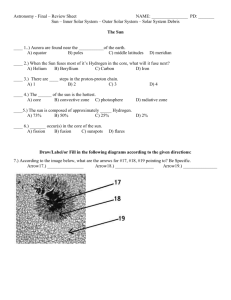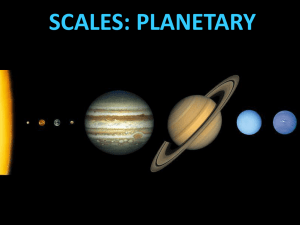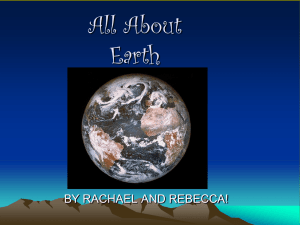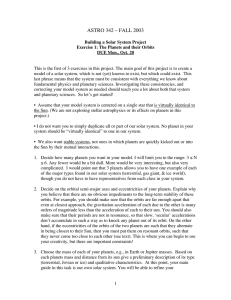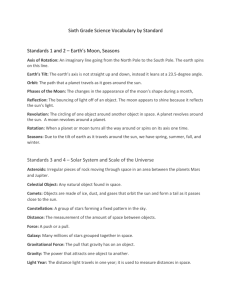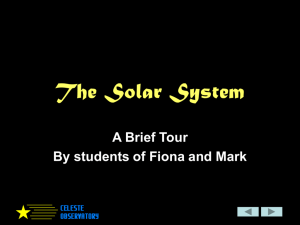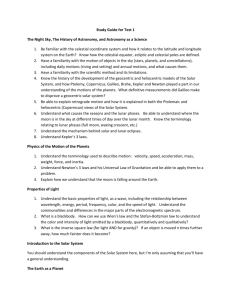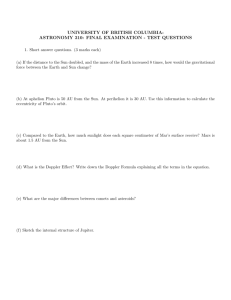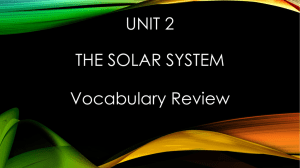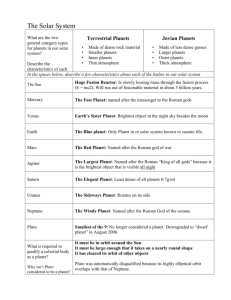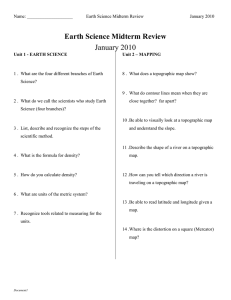Grade 6 Study Guide: Space: Test Date: Friday, February 20th
advertisement
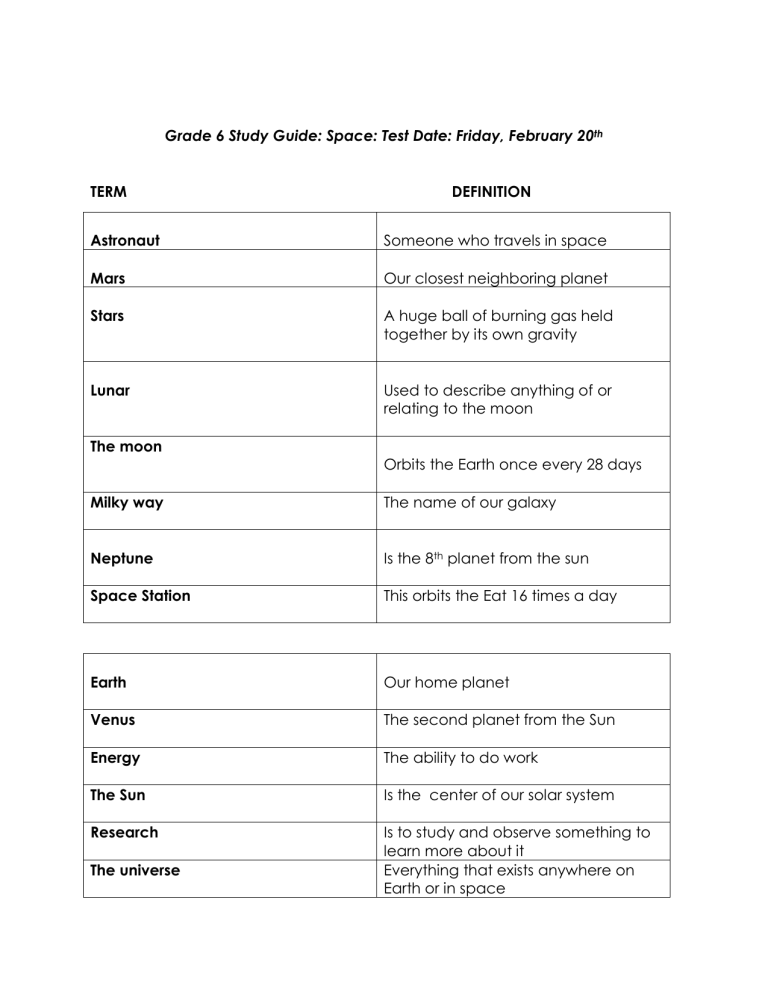
Grade 6 Study Guide: Space: Test Date: Friday, February 20th TERM DEFINITION Astronaut Someone who travels in space Mars Our closest neighboring planet Stars A huge ball of burning gas held together by its own gravity Lunar Used to describe anything of or relating to the moon The moon Orbits the Earth once every 28 days Milky way The name of our galaxy Neptune Is the 8th planet from the sun Space Station This orbits the Eat 16 times a day Earth Our home planet Venus The second planet from the Sun Energy The ability to do work The Sun Is the center of our solar system Research Is to study and observe something to learn more about it Everything that exists anywhere on Earth or in space The universe Solar system Contains the sun and all the planets that orbit the sun Mercury Is the planet closest to the sun Saturn Is the 6th planet from the sun and is known for its rings Technology Space Is science as it is put to use in the work of everyday life Everything beyond the Earth’s atmosphere, where the sun, stars and other planets are Galaxy Stars and solar systems grouped together Dust The dust coming off a comet which forms a dust tail Meteor showers Occur when Earth passes through a comet’s orbital debris Comet Is a small body of ice, rock and cosmic dust orbiting the sun Phases of the moon Occur when the moon is between the sun and Earth Satellite A natural or artificial body revolving around a planet A meteoroid that reaches Earth’s surface Meteorite Asteroid A small, rocky body revolving around the sun Asteroid belt Lies between the orbits of Mars and Jupiter Terrestrial planets Are the rocky planets of the inner solar system Astronomical unit Is the average distance between Earth and the sun Ellipses All orbits are ellipses which are stretched out circles Comets Small bodies of ice and dust Titan Is the largest moon in our solar system Oort cloud A huge collection of comets that completely surrounds the solar system

